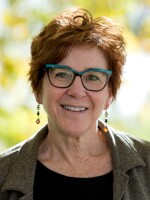This article first appeared in the St. Louis Beacon, Dec. 4, 2012 - A handful of reporters was treated today to a sight most St. Louisans will never experience: the blank canvas of the Saint Louis Art Museum’s new East Building.
Unembellished, the nearly naked space was revealed to be a work of art in itself. At $130 million, it’s worth more than many of the individual pieces it will eventually contain.
Nearly three years after breaking ground on the wing designed by Sir David Chipperfield, museum officials gave media representatives a sneak preview of the massive lobby, a handful of the 21 galleries, a 300-car underground parking garage and a 100-seat restaurant with a view of Forest Park.
The 200,000 square-foot project encased in polished black concrete increases the museum’s exhibition space by one-third. The garage doubles the amount of available parking.
Most striking about the interior is the continuous expanse of white walls interspersed with floor-to-ceiling windows, the unending flow of white oak flooring and the room-by-room repetition of an overhead concrete grid of ceiling coffers.
The coffers allow bounced and filtered light to pour (or creep, depending on the weather) into the galleries, providing a natural luminescence, bolstered by carefully controlled artificial light. As a result, museum-goers will enjoy a variety of views each time they visit, determined by sun, clouds and rain, according to Roger McFarland of HOK architectural firm.
“You’re going to experience the museum differently every day you come,” McFarland said.
Art and nature
East Wing galleries will be predominantly filled with contemporary art, with the exception of a small area near the entrance, dedicated to works from the ancient Near East and Greece.
When the new space opens to the public next summer, museum patrons will see works created from 1950 through the present. Many large contemporary pieces, too big for the galleries of the older Cass Gilbert-designed building, will find a home in the new space, according to SLAM director Brent Benjamin.
“We did a survey of our post-war collection and realized that most of our paintings are actually quite large, and we had to ask the architect to give us a number of larger walls, more than he initially had done,” Benjamin said.
The East Wing will greatly expand the entire contemporary collection.
“It’s the pantheon of 20th-century painting and sculpture -- everything from David Smith and Jackson Pollack to works by Louise Nevelson and Gerhard Richter or Georg Baselitz,” Benjamin said. “Virtually any American artist who worked in the arts in the post-war era who’s in our collection will be on view here.”
The building also includes a 100-seat restaurant with fare by Bon Appetit and views of Forest Park. Other nooks around the building will offer visitors opportunities to gaze upon nature.
“A museum in Forest Park is a special place, so part of the museum’s goal was to have the people be able to see out onto the park,” McFarland said.
Another set of views consists of nature, re-imagined. The outdoor sculpture “Stone Sea” by British artist Andy Goldsworthy -- a series of 25 arches made of Missouri limestone -- can be enjoyed from both the old and new buildings.
“We love this idea that it can be seen from above and below and from the inside, and of course, on a limited basis, people can experience it by walking through it,” Benjamin said.
Local interest, international spotlight
The museum project was funded through a capital campaign, which paid for the construction with $32 million to spare for future operating costs. Major donors include Emily Rauh Pulitzer, Alvin J. and Ruth Siteman, Jack C. Taylor, John D. and Anabeth Weil and Gary C. Werths. Corporate and foundation donors include Emerson, the Danforth Foundation and Edward Jones.
Responsibility to the donors weighed heavily on Benjamin’s mind in decisions large and small, right down to the quality of the wood floors.
“When one is responsible for seeing to the desires of a range of donors -- almost all of whom are local -- that’s a very serious obligation,” Benjamin said “They expected an excellent building and I expected to deliver them an excellent building, so yes, I think I saw every piece of wood that was installed.”
Soon after the New Year, the museum plans to begin installing 250 paintings, sculptures and other works from among its massive stored collection. But the process will only begin after extensive testing of systems that control temperature, humidity and light -- critical factors for the exhibition of fine art, according to SLAM registrar Jeanette Fausz.
“We have a collection of 33,000 objects that range from ancient Greek and Roman all the way up to contemporary and modern, and they have materials from stone to textiles to feathers and mud -- just about anything you could think of,” Fausz said. “And a lot of these materials are very sensitive to temperature changes and also are sensitive to light.”
The controlled atmosphere offers multiple benefits.
“The new building is not only designed as a beautiful space in which to view art but it is also designed to preserve art for future generations,” Fausz said.
The public will get its first in-person look inside the new space during a June 29-30 gala. Visitors should be aware that there will be a charge for the parking garage, with the amount still to be determined.
The East Wing, designed by a British architect, will likely bring not only local and national attention, but will shine a global spotlight on St. Louis.
“Having an international architect will bring the architectural community and bring a lot of publicity,” Fausz said. “I think a lot of people will want to come and see how we moved from displaying art in a 20th-century structure to going into a 21st-century structure, so there will be a lot of interest in this new facility.”

